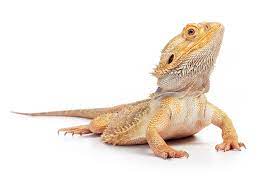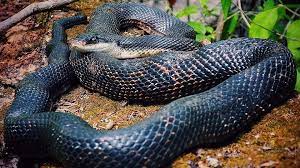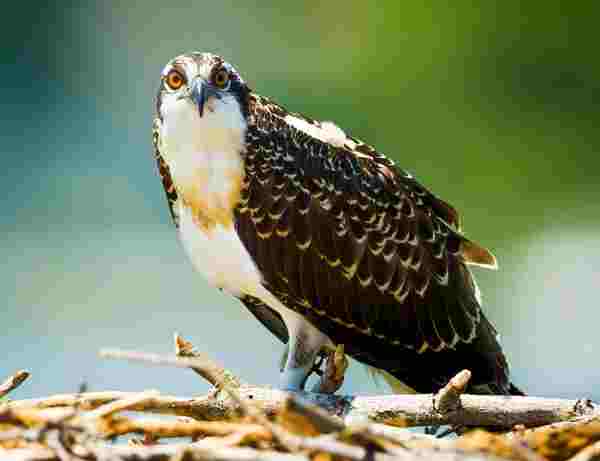When we think of bearded dragons, we often picture these reptilian creatures basking under the warm sun or curiously exploring their enclosures. With their gentle demeanor and captivating appearance, it’s hard to imagine these reptiles as prey. However, the natural world is full of surprises, and some animals have developed a taste for bearded dragons. In this intriguing exploration, we’ll delve into the fascinating, albeit brutal, reality of “Animals That Eat Bearded Dragons.”
From the wilds of Australia, the native habitat of bearded dragons, to exotic pet owners’ homes around the world, these lizards have become popular as pets. Yet, their presence on the dinner menu of certain predators is an underreported and remarkable aspect of their ecological role.
Prepare to be astonished as we unveil the unexpected predators who have evolved unique strategies and adaptations to make bearded dragons a part of their diet. This article will shed light on the hidden world of reptilian predation and the remarkable creatures that lurk within it.
The Bearded Dragon’s Habitat
Bearded dragons, native to the arid regions of Australia, have adapted to a specific habitat characterized by a combination of deserts, woodlands, and scrublands. Their natural habitat offers them a blend of basking spots for warmth and hideouts for shelter. Bearded dragons thrive in a dry, semi-arid environment with access to rocks and branches for climbing, as well as a sandy substrate for digging. In captivity, replicating this habitat with proper heating, lighting, and substrate is crucial for their well-being.

Natural Predators of Bearded Dragons
Despite their impressive appearance, bearded dragons face a range of natural predators in the wild. Native Australian predators such as snakes, birds of prey, and larger lizards pose significant threats. Young bearded dragons are especially vulnerable due to their smaller size and limited mobility. Understanding these predators is essential for appreciating the evolutionary adaptations that have allowed bearded dragons to survive in their harsh native environment.
Large Snakes:

Large snakes, such as pythons and boas, are formidable predators capable of consuming small to medium-sized bearded dragons in the wild. With their powerful constriction or strike-and-swallow methods, they can overpower and ingest prey of various sizes. While bearded dragons are not their primary food source, encounters in their natural habitats can lead to predation. In regions where both large snakes and bearded dragons coexist, these reptiles must remain vigilant to avoid becoming a meal. In captivity, it is crucial to house bearded dragons separately from potential snake predators to ensure their safety. Understanding the ecological roles and behaviors of these creatures underscores the complex interplay of predator and prey relationships in ecosystems worldwide.
Monitor Lizards:

Large monitor lizards, like the Nile monitor, are opportunistic predators with a varied diet that can include small reptiles like bearded dragons. These robust reptiles are known for their strength and adaptability, making them capable hunters in their native habitats. While bearded dragons are not their primary food source, they can become targets if encountered in the wild.
This serves as a reminder of the diverse dietary strategies of reptiles and their ability to exploit available food resources. In captivity, it is essential to provide secure enclosures for bearded dragons to prevent potential encounters with monitor lizards, ensuring the safety of these beloved pets. The interactions between monitor lizards and bearded dragons showcase the intricacies of predator-prey relationships in nature.
Birds of Prey:

Some birds of prey, particularly large hawks and eagles, may occasionally capture and consume bearded dragons in their natural habitats. With keen eyesight and powerful talons, these raptors are well-equipped to target small reptiles as part of their diet. While bearded dragons are not the primary prey for these birds, opportunistic hunting can lead to predation.
This highlights the importance of vigilance and camouflage as survival strategies for bearded dragons in the wild. In captivity, it is crucial to provide secure enclosures for these reptiles to prevent any potential interactions with birds of prey. The occasional instances of raptors preying on bearded dragons serve as a testament to the adaptability and resourcefulness of predators in diverse ecosystems.
Carnivorous Mammals:
In rare instances, certain carnivorous mammals, such as feral cats or dogs, may hunt and consume bearded dragons if they encounter them. These mammals, driven by their carnivorous instincts, may view bearded dragons as potential prey in their habitats. While bearded dragons are not a typical food source for these animals, such interactions can occur in regions where both species coexist.
Responsible pet ownership and habitat management can help prevent such encounters in captivity. These rare instances remind us of the complex web of interactions within ecosystems and the potential threats faced by smaller creatures like bearded dragons when sharing their environments with larger, opportunistic predators.
Other Bearded Dragons:

Cannibalism can occur among bearded dragons, particularly in overcrowded or stressful conditions. In captivity, housing multiple bearded dragons together without proper space and environmental enrichment can lead to territorial disputes and aggression, which may result in one bearded dragon consuming another. To prevent such incidents, it’s essential to provide adequate space and monitor social dynamics among bearded dragons in a captive environment.
In the wild, territorial disputes can also lead to cannibalism, although these instances are less common. Understanding the social behaviors and space requirements of bearded dragons is crucial for their well-being and for ensuring harmonious cohabitation in captivity. These occurrences underscore the importance of responsible pet ownership and proper husbandry practices for these reptiles.
Predation Strategies and Adaptations
Bearded dragons have evolved several remarkable strategies and adaptations to evade their natural predators. Their first line of defense is camouflage; their coloration and texture help them blend into their surroundings.
When confronted, they can puff up their bodies, open their mouths to display their “beard” (a pouch under their chin), and hiss as a warning. If these displays fail, they can sprint short distances to escape. Understanding these behaviors sheds light on their incredible ability to survive in a predator-rich environment.
Predation and Bearded Dragon Behavior
Predation risk has a significant influence on bearded dragon behavior. They exhibit basking and foraging behaviors primarily during the morning and afternoon to minimize exposure to predators. They also spend a considerable amount of time basking under the sun to regulate their body temperature, which aids in quick escapes when needed. Their cautious and vigilant behavior reflects the constant need to balance their dietary and safety needs in their natural habitat.
Interaction with Humans and Introduced Predators
As bearded dragons have become popular pets worldwide, they face new challenges. Introduced predators like feral cats and dogs pose threats to bearded dragon populations, especially when they encroach on human-inhabited areas. Additionally, the illegal pet trade can have a detrimental impact on wild populations. Conservation efforts and responsible pet ownership are essential to mitigate these challenges.
Coexisting with Bearded Dragons
For those who keep bearded dragons as pets, coexistence revolves around providing a suitable environment, proper nutrition, and responsible care. Understanding their natural behavior and dietary needs is crucial for their well-being in captivity. Providing an enriched environment and regular health check-ups helps ensure a happy and healthy life for these captivating reptiles.
Final Words
Bearded dragons’ survival in the wild is a testament to their remarkable adaptations and strategies in the face of natural predators. Whether in their native habitat or as beloved pets, appreciating their unique characteristics and vulnerabilities enhances our understanding of these fascinating creatures. Responsible stewardship and conservation efforts are vital to preserving their populations in the wild while ensuring their welfare in captivity.
Reference:
- https://www.bushheritage.org.au/species/bearded-dragons
- https://animalcarehospital.org/2023/05/15/walking-your-bearded-dragon/
- https://vcahospitals.com/know-your-pet/bearded-dragons-owning

Jeevan Kodiyan
An animal enthusiast with an interest in zoology, studying the behavior and activities of animals in the wild habitat. I work on research projects related to species conservation and endangered species protection. I also leverage zoology to become an educator, educating others about the importance of protecting our natural environment and the beauty of animals in their natural habitats.









